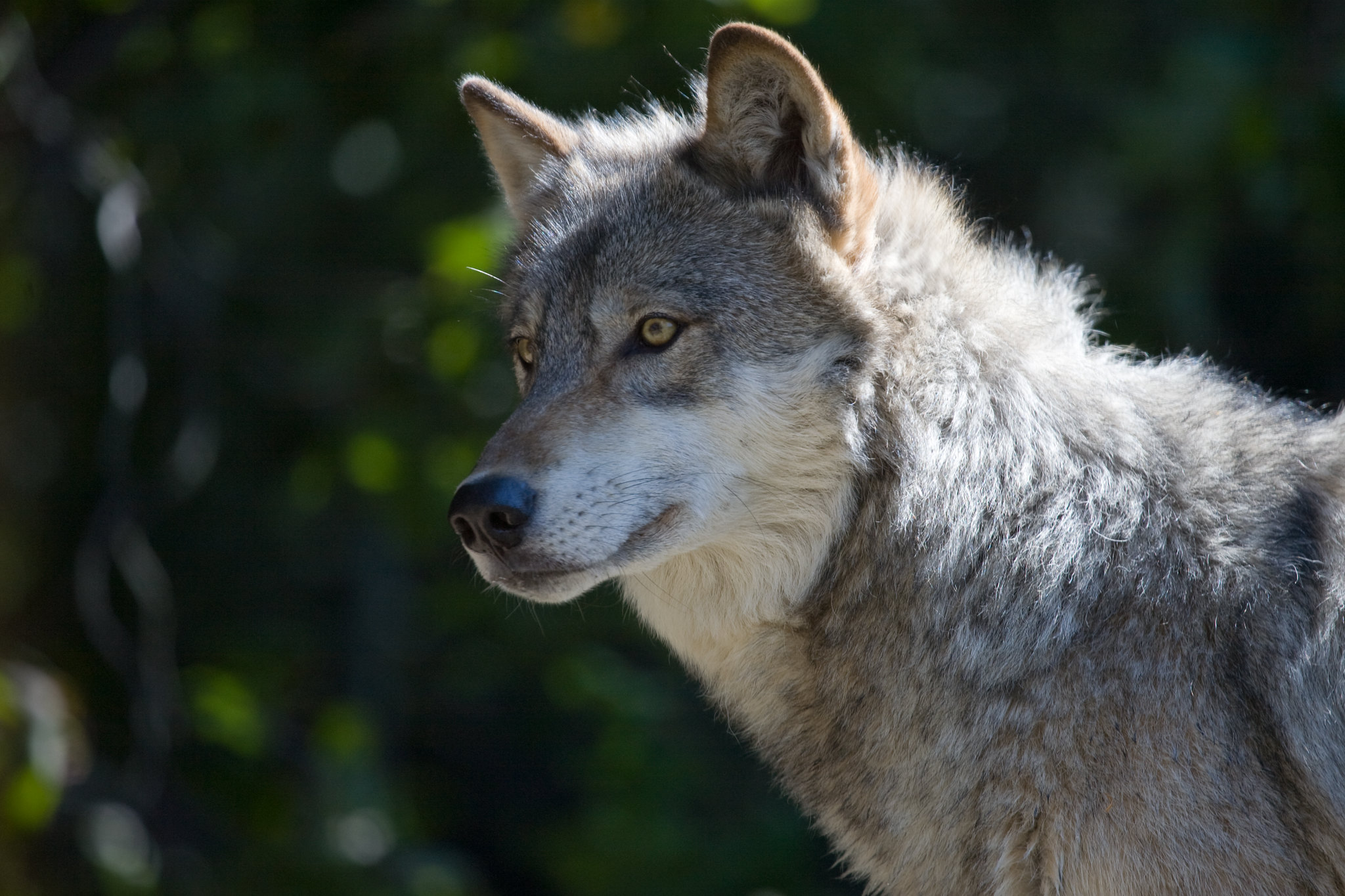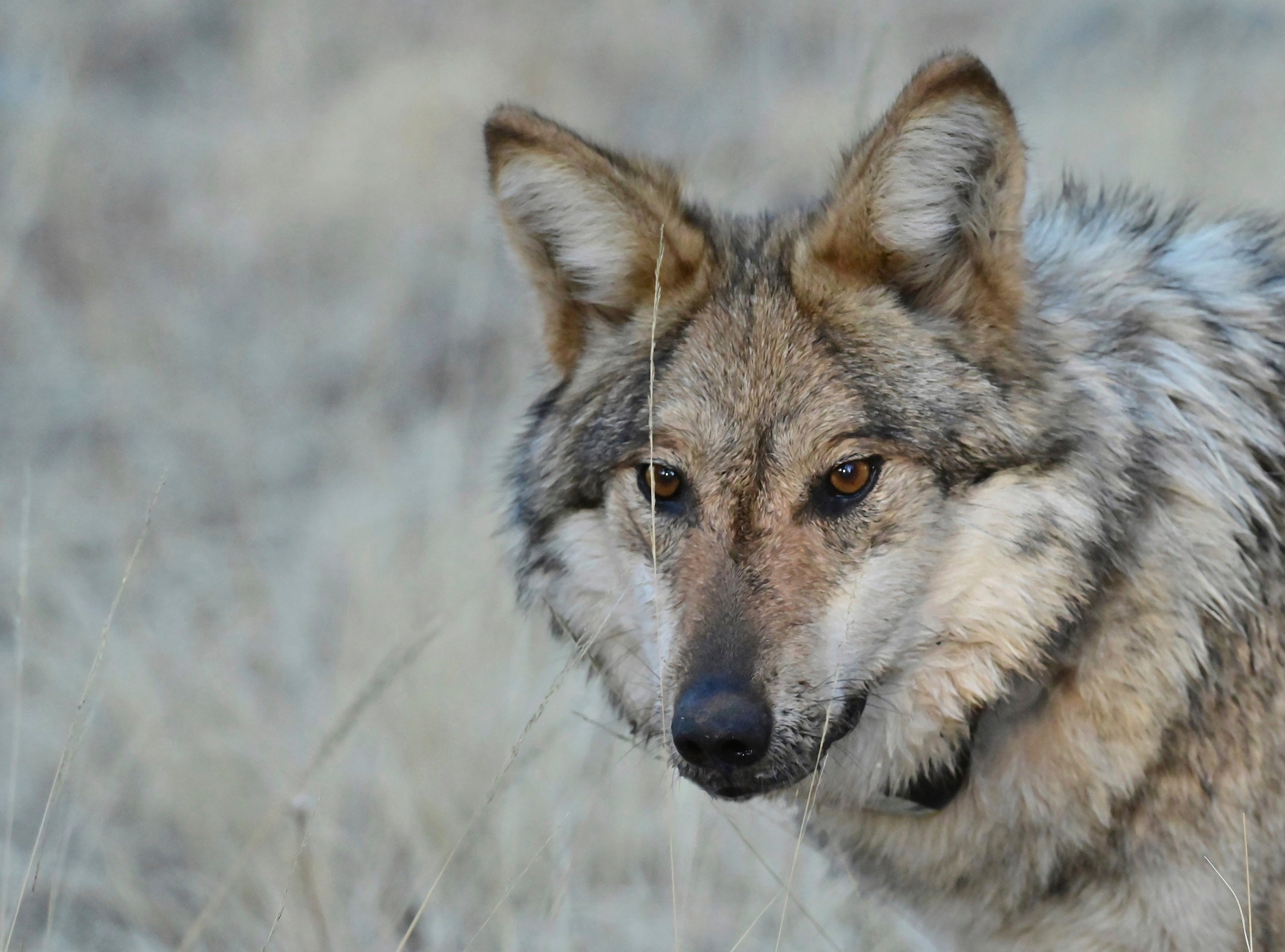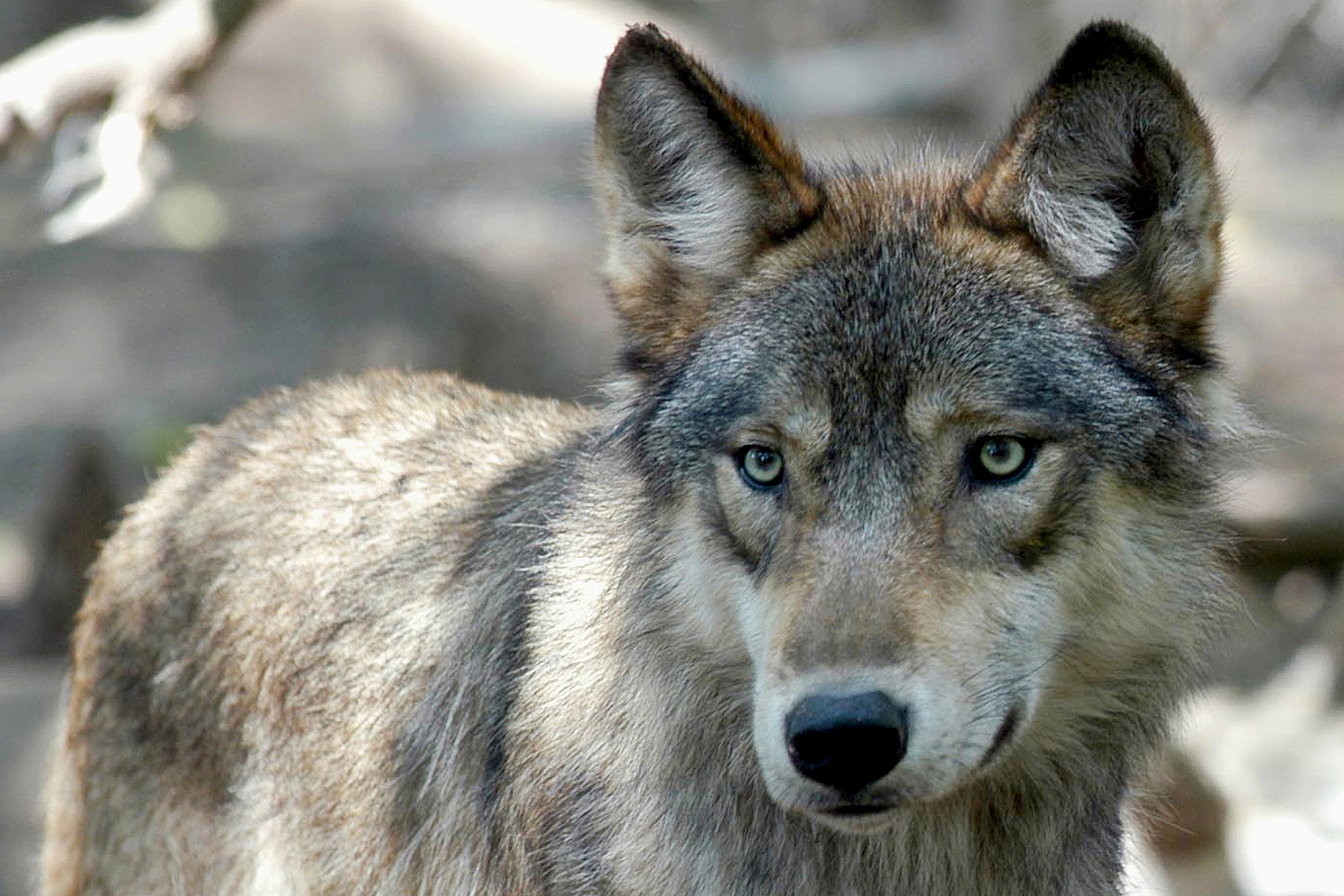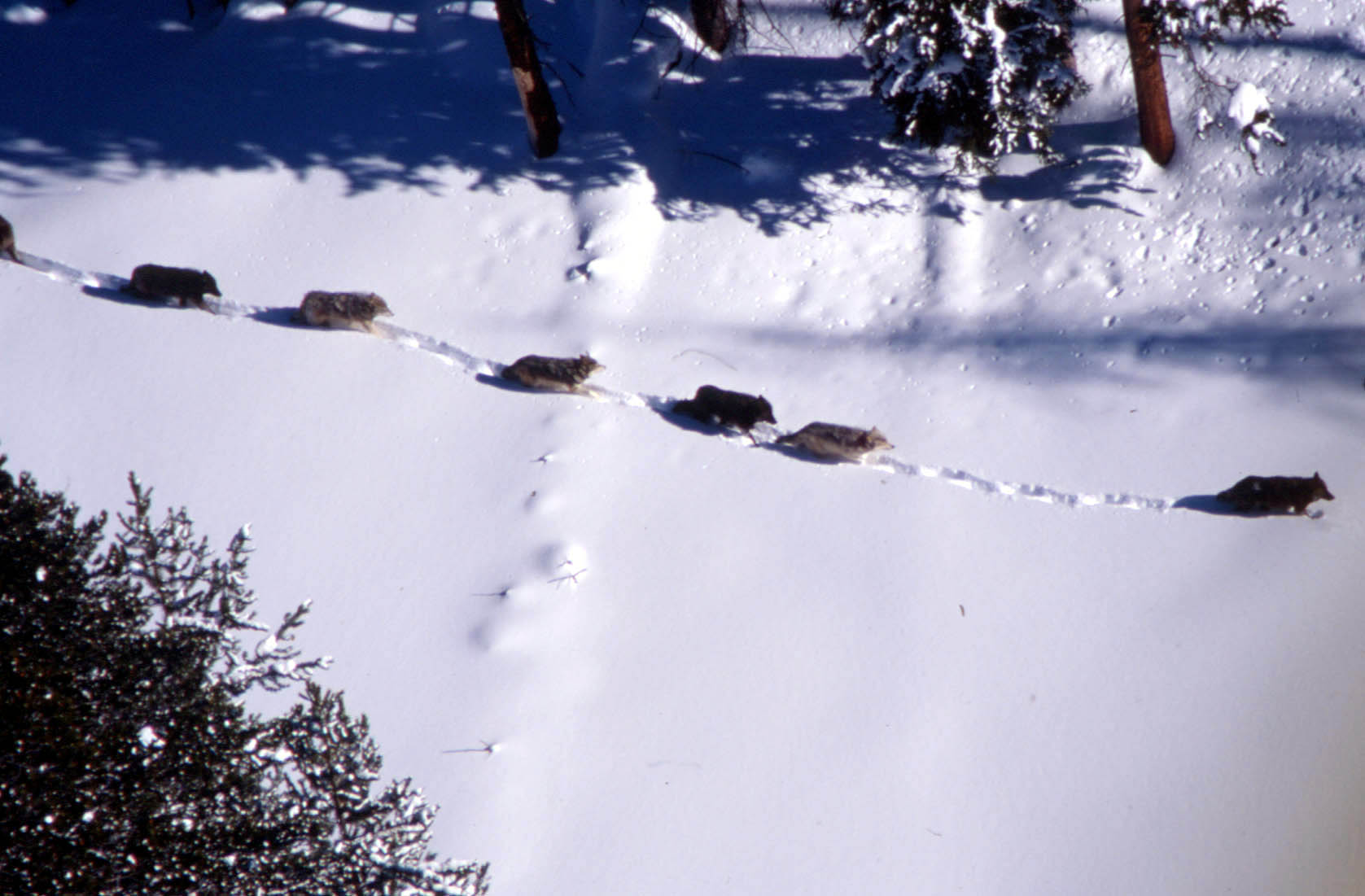When wolves attacked cattle on his farm two years ago, Mark Liebaert said it’s the closest he ever came to giving up farming.
“I’d go out there at 3 in the morning in the dark and try to scare the wolves off, try to keep the cattle from going through the fence,” said Liebaert, who is also chair of the Douglas County Board.
Liebaert said he lost cattle to wolves on his farm, and the behavior of the remaining animals changed. They bunched together in the pasture rather than spreading out to feed. He noticed his cows lost weight and didn’t produce as much milk.
News with a little more humanity
WPR’s “Wisconsin Today” newsletter keeps you connected to the state you love without feeling overwhelmed. No paywall. No agenda. No corporate filter.
During that time, only non-lethal methods like flagging, electric fences and flashing lights could be used to keep wolves at bay. That changed when the wolf was delisted as an endangered species in January of last year. Now that a federal judge has restored protections, Liebaert said he believes farmers in northern Wisconsin will suffer.
“I agree they belong on the landscape, but they belong on the landscape in numbers and in an area where you don’t have so much conflict between the people who live here,” he said.
The Wisconsin Department of Natural Resources estimates the state had around 1,100 wolves prior to last year’s February wolf hunt, during which hunters killed 218 wolves in less than three days.
The DNR verified 108 of 182 reported wolf conflicts last year, marking a slight increase in confirmed conflicts from the two previous years. Most verified complaints came from Douglas and Bayfield counties, according to Brad Koele, the DNR’s wildlife damage specialist. Overall, Koele said 69 problem wolves were killed, and the state has paid out $3.1 million in depredation payments since 1985.
The number of livestock killed by wolves is small compared to the 3.45 million cattle in Wisconsin.
Amid the rise in conflicts, Republican U.S. Sen. Ron Johnson and Democratic U.S. Sen. Tammy Baldwin recently introduced a rare bipartisan proposal to delist the gray wolf in the Great Lakes region.
“In the western Great Lakes region, state wildlife agencies should manage the recovered population so the wolf’s ongoing role in the ecosystem does not come at the expense of farmers, loggers, sportsmen and people who simply live in these areas,” said Johnson in a release announcing the legislation.
In a statement, Baldwin said the bipartisan bill is the best solution because it’s driven by science.
“I have supported a bipartisan effort to delist the gray wolf in Wisconsin since 2011 because of the scientific conclusion that the population has recovered in the Great Lakes region,” said Baldwin. “People across Wisconsin have worked hard to help the gray wolf come back from the brink of extinction, and now our state is home to many wolves.”
Not all scientists agree with Baldwin that the wolf has recovered, including Adrian Treves, professor of environmental studies at the University of Wisconsin-Madison.
“I feel in this case, the senator is making a value judgment, which is her prerogative as an elected official,” said Treves. “But, she shouldn’t be cloaking it behind science because the science does not support her position.”
He pointed to a peer review by five scientists, including Treves, that found shortcomings with the science in the U.S. Fish and Wildlife Service proposal to delist the wolf across most of the nation under the Trump administration.
Former DNR wolf biologist Adrian Wydeven, who also took part in the review, agreed there were weaknesses in the agency’s argument for delisting. Even so, he said three of the five reviewers agreed that gray wolves had recovered in the Great Lakes region.
“I think the statement that Sen. Baldwin has made is correct,” said Wydeven. “I think Sen. Johnson has kind of gone beyond that in that wolves are such an issue for loggers and hunters and farmers and sort of an exaggerated claim there. Certainly, they’re of concern to some farmers, but the vast majority of farmers are not impacted by wolves.”
Three reviewers, including Wydeven, agreed it was reasonable for the agency to conclude that the proposed rule along with state management plans in Michigan, Minnesota, and Wisconsin would maintain a viable wolf population in the region. Although, one reviewer noted it was not his area of expertise.
Treves maintains the science doesn’t support the gray wolf’s recovery nationwide, adding states’ ability to manage a viable wolf population is not the same as the species’ recovery.
Treves said scientists are divided over wolf management, and Wydeven agreed there’s a greater split among the scientific community over wolf conservation. Both noted federal courts have ruled against the U.S. Fish and Wildlife Service in previous attempts to delist the wolf as a distinct population segment in the Great Lakes region.
Wildlife advocacy groups and Wisconsin tribes want to maintain federal protections for wolves. In lawsuits filed last year, they argued the state violated tribal treaty rights and failed to properly manage wolves based on science.
More than a half dozen bills have been introduced by Wisconsin’s Congressional delegation to delist the wolf since 2015. So far, the wolves have only been successfully delisted by Congress in Idaho, Montana and parts of nearby states in 2011. Wyoming was delisted in 2017.
Editor’s note: This story was edited on March, 28, 2022, to clarify the position of scientists’ remarks on the wolf’s recovery.
Wisconsin Public Radio, © Copyright 2025, Board of Regents of the University of Wisconsin System and Wisconsin Educational Communications Board.





